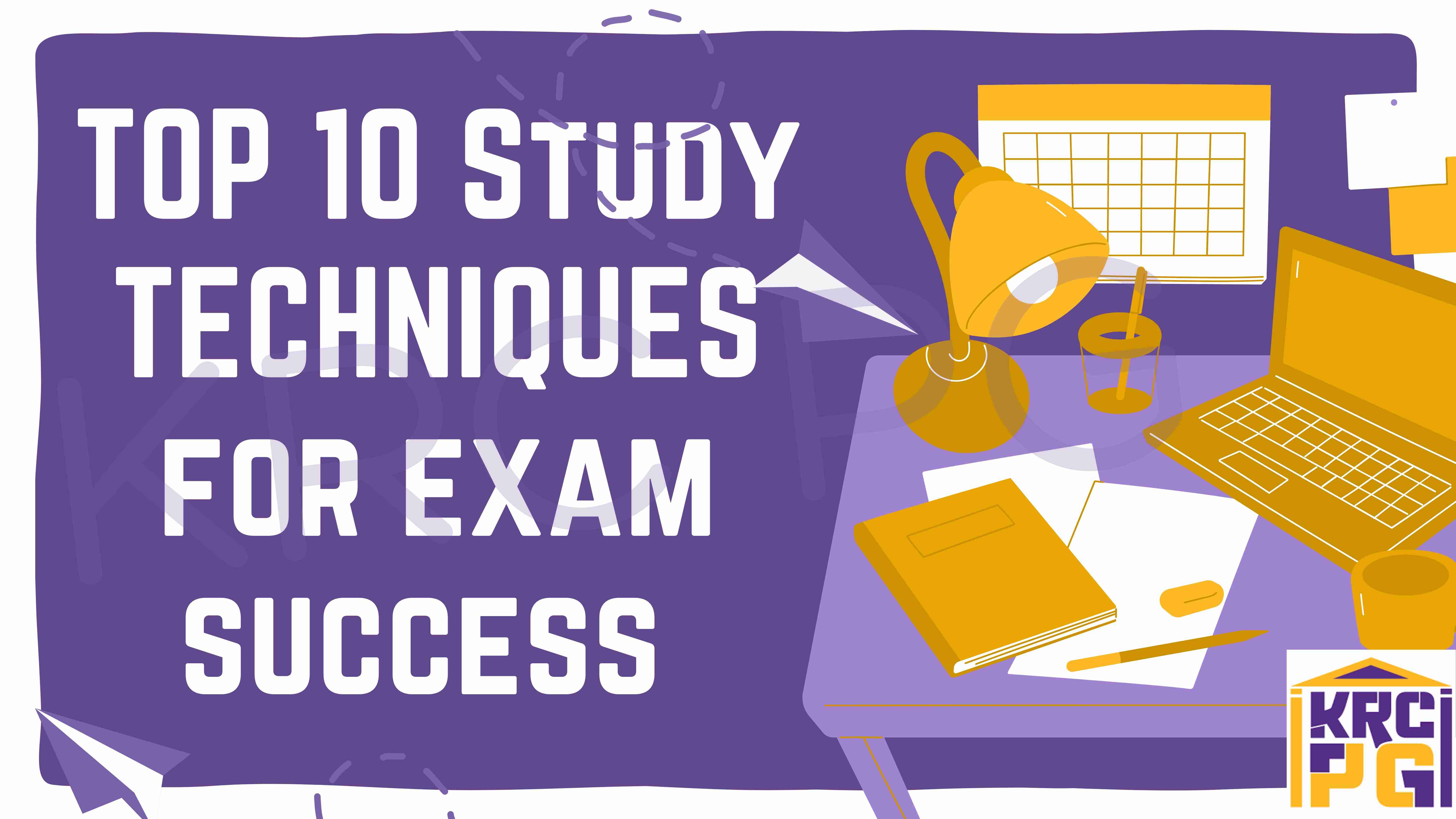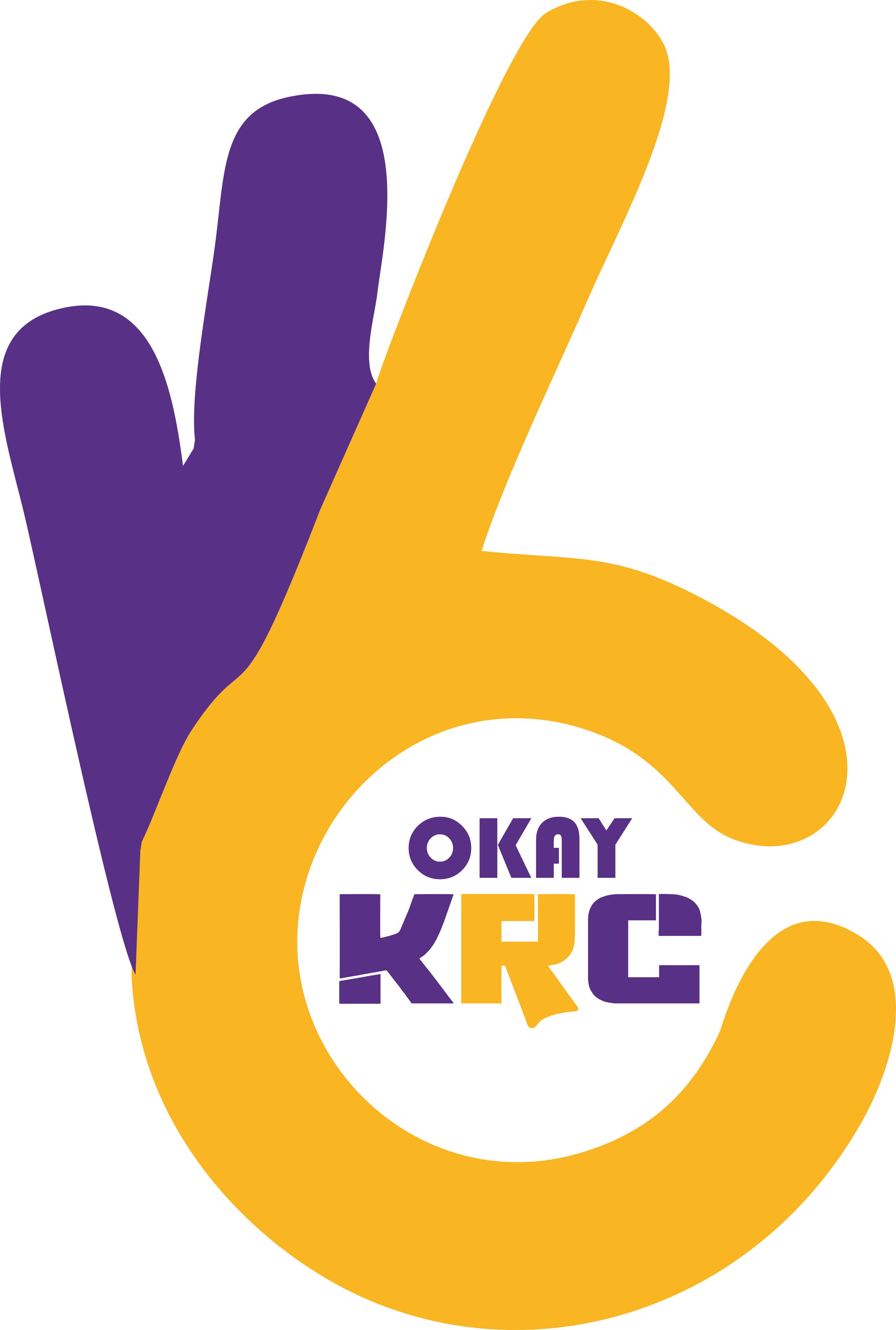KRC PG Blogs

TOP 10 STUDY TIPS & TECHNIQUES FOR EXAM SUCCESS
Hey there student! Exams coming over? It’s normal to feel stressed. There is so much pressure involved for meeting academic expectations, and not fulfilling them on time results in lack of motivation and drive to move forward. Well, don’t worry. Every problem comes with a solution in it. We’ll discuss in detail various tips and techniques to sail through the coming exam season. Let’s get started!
Table of Contents –
·
Sneaking
into your ‘Today’
·
SQ3R
Method
·
Pomodoro
Technique
· Color-Coded Notes
·
Feynman
Technique
·
Spaced
Repetition
·
Mind
Mapping
·
Mnemonic
Devices
·
Self
Analysis
·
Final
Note
· References
Effective studying approach can significantly enhance grasping power and help building better memory, cultivating academic success. This multi-faceted strategy will certainly have positive outcomes if implemented correctly. Let’s understand one by one.
1. Sneaking into your ‘Today’
You might be wondering what this is about? Well, it’s nothing but forming an effective schedule. Breaking down, the major areas, you need to focus upon are –
Environment –
·
Fix a corner of your room nearby a window. Study
in daylight as long as possible and in night study sessions, minimize screen
time.
·
Surround yourself with light and bright colors,
preferably, tints of yellow or white, the O.G.
·
Place inspirational visuals and quotes in front
of you to keep yourself going.
·
Munch upon healthy snacks such as nuts, oats,
fruits, etc and steer clear of caffeine.
·
Don’t get too comfortable. Yes, you read that
right! Stay away from bed during studying hours to avoid drowsiness as that
might soon turn you into a sleeping panda. ;)
Say No to Distractions –
· Smartphone, the G.O.A.T. distraction! Hahah joking! Well, that’s true to certain extent. While studying, stay miles awayyy from your phone. It will lure you into an endless loop of scrolling and you’ll end up wasting lot of your time and energy.
· Your friends might be planning to hangout and forcing you into the plan. You’ve got to complete your lectures right? Learn rejecting politely. You’ll thank yourself later for that.
Being Healthy, Mentally & Physically –
· I may sound like a boring adult but ‘A Healthy Body Has a Healthy Mind’ is certainly true. This doesn’t necessarily mean to dedicate long hours in the gym. You could start by exercising 20 minutes daily.
· Practice mindfulness, meditate to increase your concentration span. Listen to peaceful instrumental music for better focus.
· Form healthy eating habits, consume balanced meals.
· Good sleep is very crucial in exam season. It improves brain performance, mood and health. Set your sleep schedule of atleast 6-8 hours.
2. SQ3R Method/ SQRRR Acronym –
SQ3R or simply, SQRRR is a 5-step method for reading comprehension. This method allows students to actively engage with their texts and improves retention.
S - Survey your entire text in a brief manner. This involves reading the introduction, headings, summary, questions at the back, etc. This process should take 5-10 minutes.
Q - Question; form questions based on the headings.
R - Read; as if you are to answer those questions in a test simultaneously, highlighting the main points.
R - Recite, after you’ve completed reading without taking any reference from the text.
R - Review; this is the most important step. Revise what you have read within 24 hours for best retention.
3. Pomodoro Technique –
Time Management is of immense importance in exam time. Monotonous studying hours might lead any student to procrastinate. Pomodoro Technique is the saviour here. This is a time management technique developed by Francesco Cirillo.
· This technique involves creating fixed time intervals, usually of 25 minutes, followed by short breaks of 5-10 minutes.
· Each interval is known as a pomodoro, an Italian word for tomato, Cirillo used for as a timer. Complete 4 pomodoros after taking breaks of not more than 10 minutes.
· This structured approach will help you build consistent studying hours and avoid procrastination.
4. Color-Coded Notes –
It is one-step solution for better retention and excellent memory, improving your overall efficiency
· Add more colors to your notes. No! I am not talking about rainbows here ;)
· Use Red color for headings, Orange/Black for subheadings, form tables and diagrams as much as you can and try to prepare your notes in a brief manner.
· Visual memory helps to retain information better.
5. Feynman Technique –
Developed by Richard Feynman, this technique is a four- step process which involves-
1. Choosing any concept to study.
2. Teach the same in a very simple manner to yourself or as if you are teaching a child. Use easy language. This will help you developing conceptual clarity as well.
3. Revision of the source material when needed.
4. Simplifying explanations and creating analogies.
6. Spaced Repetition –
This method is primarily for long-term retention of concepts, performed by using flashcards.
· Understand and learn the concept.
· Prepare flashcards based on the same.
· Revise the concept in intervals such as in days, weeks, and months.
· ‘Rattafication’ not always works ;)
7. Mind Mapping –
Mind Mapping is the best technique for systematic organization, developing conceptual clarity and excellent visual learning. Steps are as follows –
1.
The
Central Idea – To create a mind map, start by defining the concept or
central idea.
2.
Identify
Key Points – Add key points to the central idea. Draw a flowchart or
diagram to represent the same.
3.
Add
Main Branches – Now, add the main branches i.e., similar concepts related
to your central idea in the flowchart/diagram.
4.
Connect
– this involves connecting all the key points and your central idea in an
organized manner.
5.
Supporting
Details – Add the supporting details in your mind map such as related
examples or current affairs.
6.
Review
and Refine – Keep reviewing your concept map and building it better
gradually.
8. Mnemonic Devices –
Mnemonics are memory devices that help recall larger piece of information.
· Choose the concepts that you’re finding tough to learn.
· Associate it with the most easy words or slangs so that you’re able to recall it fast.
· Even songs and rhymes work as mnemonics.
9. Self Analysis –
Self Analysis is a study approach focused on analyzing your performance by yourself.
· Form questions yourself and attempt tests based on the same.
· Evaluate your performance, refer to good sources.
· Look out for areas where you can improve, join mentorship programmes for guidance.
10. Final Note –
Burnout, procrastination, boredom, etc are some of the most common hurdles a student faces. By addressing them with scientific methodologies, anyone can improve their academic performance and meet the desired results. Best of luckkk champ! J
I hope you found this blog helpful. Share your thoughts on this, in the comment section below.
Students hunting for an amazing P.G./Hostel experience, KRC PG is a platform where you can book your accommodation anywhere in India.
· Download KRC PG App
· Visit www.krcpg.com
· Mail us at krcpghelpline@gmail.com
· Contact – 9462510911 for further queries.
References –
https://in.nau.edu/academic-success-centers/sq3r-reading-method/
https://www.pomodorotechnique.com/
https://leverageedu.com/blog/color-coded-notes/
https://todoist.com/inspiration/feynman-technique
https://www.edrawmind.com/article/techniques-for-mind-map.html
https://psychcentral.com/lib/memory-and-mnemonic-devices
By - Avani
Post Your Comment
Comments

OKAY KRC APP
All in one Property Management App - avoid hassles and streamline your property management conveniently.


